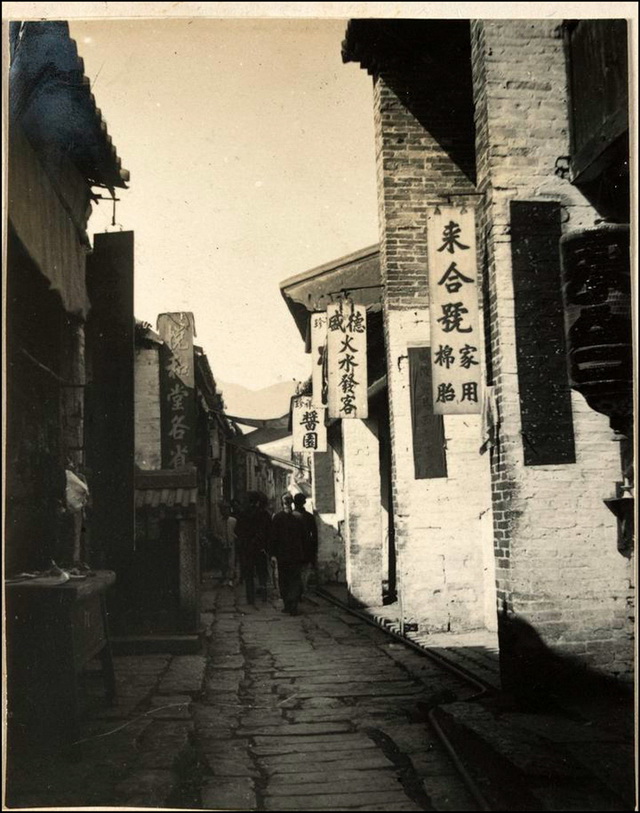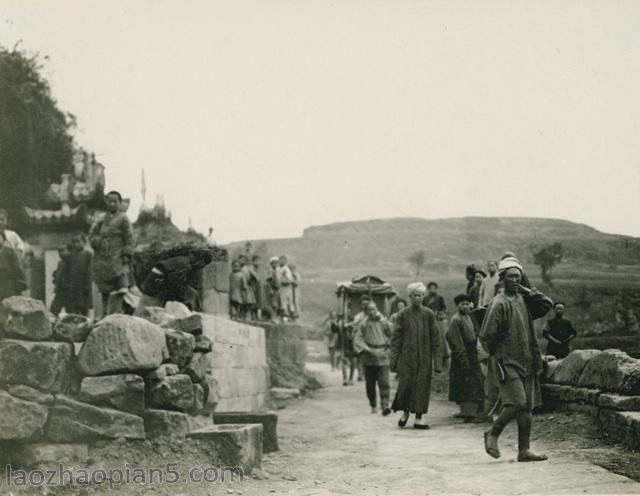Period:Qing dynasty Production date:1690-1700 (circa)
Materials:porcelain
Technique:glazed, underglazed,
Dimensions:Diameter: 13.70 centimetres
Description:
Blue-and-white cup with cover and saucer, with European figures and a French inscription. The underglaze blue decoration on this tall covered cup and saucer is divided into radiating panels and the main panels contain a crowned European King and Queen seated on a throne in an interior. A misspelt French inscription around the outside rim of the cup reads “L’EMPIRE DE LA VERTU EST ETABLIS JUSQU’AU BOUT DE L’UNERS” (sic) (“the empire of virtue stretches to the end of the universe”). The radiating panels contain alternately a kneeling Chinese figure below a flock of flying birds, and a sapling. On the base of the cup is a stylized square seal mark.
IMG
![图片[1]-saucer BM-Franks.582-China Archive](https://chinaarchive.net/Qin dynasty/Ceramics/mid_00359280_001.jpg)
![图片[2]-saucer BM-Franks.582-China Archive](https://chinaarchive.net/Qin dynasty/Ceramics/mid_00030627_001.jpg)
![图片[3]-saucer BM-Franks.582-China Archive](https://chinaarchive.net/Qin dynasty/Ceramics/mid_00300005_001.jpg)
![图片[4]-saucer BM-Franks.582-China Archive](https://chinaarchive.net/Qin dynasty/Ceramics/mid_00506862_001.jpg)
Comments:Harrison-Hall and Krahl 1994:These crowned figures have been variously but unsatisfactorily explained. In the 19th century they were believed to represent the historical figures of Louis IX of France (1226 – 70) and his mother Queen Blanche of Castille (Jacquemart and Le Blant, 1862, pl.XVI, fig. 1). Later they have been identified as Louis XIV (1661 – 1715) and Queen Margarita of Spain (Lunsingh Scheurleer, 1974, p.98 citing J. Helbig). Until the source of this design – perhaps a medal or print – is discovered, any such identification remains, however, hypothetical. Twenty-five covers with this design were recovered from a shipwreck off the coast of Vietnam, 100 nautical miles south of Vung Tau near Con Dao Island (Christies, Amsterdam, 8th April 1992, lot 856), one of which is now in The Royal Museum of Scotland, Edinburgh. The cargo of this Asian trading vessel can only be approximately dated on the basis of an inkstick with a cyclical date equivalent to 1690, which provides a terminus post quern. Other pieces with this design are to be found for example in the Ashmolean Museum, Oxford, Great Britain (Macintosh, 1977, pl.86), in the Musee Guimet, Paris, France (Hervouet and Bruneau, 1986, no.9.94), and in the Victoria and Albert Museum, London (Honey, 1927, pl. III).
Materials:porcelain
Technique:glazed, underglazed,
Dimensions:Diameter: 13.70 centimetres
Description:
Blue-and-white cup with cover and saucer, with European figures and a French inscription. The underglaze blue decoration on this tall covered cup and saucer is divided into radiating panels and the main panels contain a crowned European King and Queen seated on a throne in an interior. A misspelt French inscription around the outside rim of the cup reads “L’EMPIRE DE LA VERTU EST ETABLIS JUSQU’AU BOUT DE L’UNERS” (sic) (“the empire of virtue stretches to the end of the universe”). The radiating panels contain alternately a kneeling Chinese figure below a flock of flying birds, and a sapling. On the base of the cup is a stylized square seal mark.
IMG
![图片[1]-saucer BM-Franks.582-China Archive](https://chinaarchive.net/Qin dynasty/Ceramics/mid_00359280_001.jpg)
![图片[2]-saucer BM-Franks.582-China Archive](https://chinaarchive.net/Qin dynasty/Ceramics/mid_00030627_001.jpg)
![图片[3]-saucer BM-Franks.582-China Archive](https://chinaarchive.net/Qin dynasty/Ceramics/mid_00300005_001.jpg)
![图片[4]-saucer BM-Franks.582-China Archive](https://chinaarchive.net/Qin dynasty/Ceramics/mid_00506862_001.jpg)
Comments:Harrison-Hall and Krahl 1994:These crowned figures have been variously but unsatisfactorily explained. In the 19th century they were believed to represent the historical figures of Louis IX of France (1226 – 70) and his mother Queen Blanche of Castille (Jacquemart and Le Blant, 1862, pl.XVI, fig. 1). Later they have been identified as Louis XIV (1661 – 1715) and Queen Margarita of Spain (Lunsingh Scheurleer, 1974, p.98 citing J. Helbig). Until the source of this design – perhaps a medal or print – is discovered, any such identification remains, however, hypothetical. Twenty-five covers with this design were recovered from a shipwreck off the coast of Vietnam, 100 nautical miles south of Vung Tau near Con Dao Island (Christies, Amsterdam, 8th April 1992, lot 856), one of which is now in The Royal Museum of Scotland, Edinburgh. The cargo of this Asian trading vessel can only be approximately dated on the basis of an inkstick with a cyclical date equivalent to 1690, which provides a terminus post quern. Other pieces with this design are to be found for example in the Ashmolean Museum, Oxford, Great Britain (Macintosh, 1977, pl.86), in the Musee Guimet, Paris, France (Hervouet and Bruneau, 1986, no.9.94), and in the Victoria and Albert Museum, London (Honey, 1927, pl. III).
© Copyright
The copyright of the article belongs to the author, please keep the original link for reprinting.
THE END





![[Qing Dynasty] British female painter—Elizabeth Keith, using woodblock prints to record China from the late Qing Dynasty to the early Republic of China—1915-China Archive](https://chinaarchive.net/wp-content/uploads/2022/11/image-191x300.png)